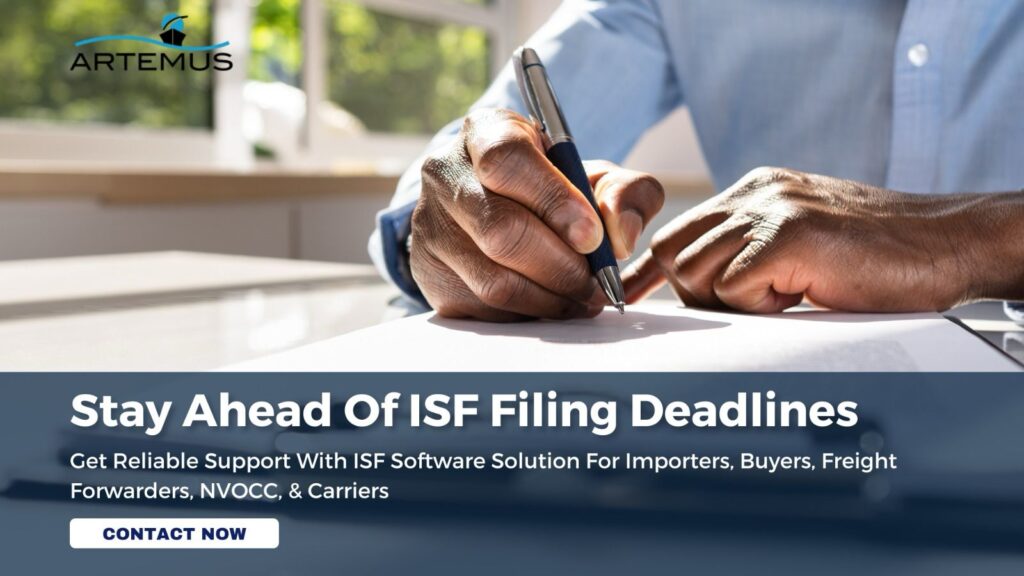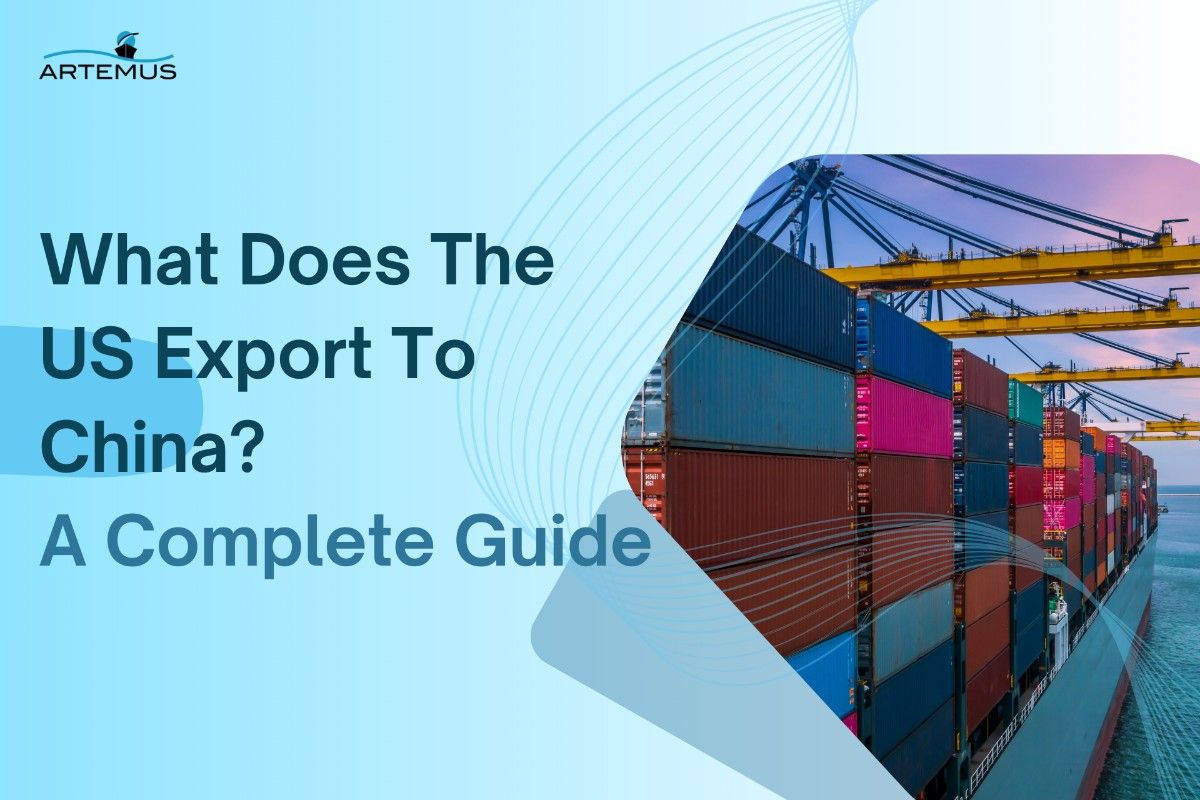
Japan Imports And Exports 2024: Top Products & Their Impact
Japan’s trade system is central to its economy, with imports like raw materials and food supporting its industries and population.

Are you dreaming of importing a car from Japan but feeling overwhelmed by the process? Look no further! In this comprehensive guide, we’ll walk you through the steps to successfully import a car from Japan to the USA. From understanding import regulations to navigating shipping logistics and ensuring compliance, we’ve got you covered every step of the way.
But wait, there’s more! Artemus Transportation Solutions is here to make your importing journey even smoother. With our specialized compliance support, including our state-of-the-art ISF and AMS filings software solution, we’ll help you streamline the paperwork and ensure seamless customs clearance.
Say goodbye to headaches and delays – with Artemus Transportation Solutions by your side, importing your dream car from Japan has never been easier. Let’s dive in and make your automotive dreams a reality!
Table Of Contents
Importing a car from Japan to the USA can be an exciting process, but it requires careful planning and adherence to various regulations. Below is a detailed guide on how to import a car from Japan to the USA, covering the entire process along with detailed regulations:
Before you begin the import process, it’s essential to conduct thorough research and prepare yourself for the journey ahead. Here’s what you need to do:
Once you’ve selected the car you wish to import, you’ll need to navigate the purchasing process:
After purchasing the car, it’s time to arrange for its shipment to the USA:
1. Roll-on/Roll-off (Ro-Ro) Shipping: Ro-Ro shipping involves loading the vehicle onto a specialized vessel using ramps. The vehicle is driven on at the port of origin and driven off at the destination port.
This approach is renowned for its simplicity and affordability. It’s suitable for operable vehicles without additional cargo. The key advantage of Ro-Ro shipping is its efficiency, as vehicles can be loaded and unloaded quickly, reducing turnaround times.
2. Shared Container Service: In shared container service, multiple vehicles are loaded into a single shipping container for transport. This method allows for cost-sharing among multiple shippers, making it more economical for individuals shipping smaller quantities of vehicles.
Shared container service offers greater security and protection compared to Ro-Ro shipping since vehicles are enclosed within a container. It’s suitable for individuals shipping one or two vehicles who want added security and are willing to wait longer for consolidation and deconsolidation at the ports.
3. Full Container Shipping: Full container shipping involves dedicating an entire shipping container to a single vehicle. This method offers the highest level of security and protection since the vehicle is the only cargo in the container.
Full container shipping is ideal for shipping high-value or vintage vehicles that require extra care and protection. While it’s more expensive than shared container service, it provides peace of mind for owners concerned about potential damage during transit.
Once the car arrives at a US port, it must go through customs clearance:
Gathering and completing the required documentation is a crucial step in the process of importing a car from Japan to the USA.
Proper documentation ensures compliance with regulations and facilitates smooth customs clearance. Here’s a breakdown of the essential documentation you’ll need to gather and complete:
Depending on the specific circumstances of your importation, you may need to gather additional documentation, such as:
If the imported vehicle does not meet US safety and emissions standards, it may require modifications for compliance:
Once the car clears customs and compliance, you can proceed with registration and insurance:
1. Register The Vehicle: Registering your imported vehicle with the Department of Motor Vehicles (DMV) is a crucial step in legally driving it on US roads.
The registration process may vary slightly depending on the state you reside in, but typically involves submitting the necessary documentation, such as the vehicle’s title, bill of sale, import paperwork, and any required inspection certificates.
Additionally, registration fees and taxes will be required. Once registered, you’ll receive license plates for your vehicle, allowing you to legally operate it.
2. Obtain Insurance: Purchasing insurance coverage for your imported vehicle is essential to protect yourself financially in case of accidents, theft, or other unforeseen events.
When insuring your imported vehicle, be sure to provide accurate information about the vehicle’s make, model, year, and any modifications made to ensure the policy accurately reflects its value and specifications.
You can obtain insurance coverage from a variety of providers, so it’s worth shopping around to find the best rates and coverage options for your needs.
Additionally, consider factors such as liability coverage limits, comprehensive and collision coverage, and any additional coverage options you may require based on your driving habits and preferences.
Related: How To Import A Car To The United States? 2024 Regulations
Importing a car from Japan to the USA involves several costs, including purchase price, shipping fees, import duties, taxes, and any necessary modifications for compliance. Let’s break down these costs in detail:
The purchase price of the vehicle is typically the first cost to consider when importing a car from Japan. The price can vary widely depending on factors such as the vehicle’s make, model, year, condition, mileage, and market demand. While some vehicles may be relatively affordable, others, particularly rare or high-performance models, may command higher prices.
Approximate Cost: The purchase price of a Japanese imported vehicle can range from a few thousand dollars for older or more common models to tens of thousands of dollars or more for newer, premium, or collectible vehicles.
Shipping fees cover the cost of transporting the vehicle from Japan to the USA. The cost of shipping depends on several factors, including the shipping method (Ro-Ro, shared container, or full container), the distance between ports, fuel prices, and seasonal demand.
Approximate Cost: Shipping fees for importing a car from Japan to the USA typically range from $1,000 to $3,000 for Ro-Ro shipping, $1,500 to $4,000 for shared container service, and $2,000 to $5,000 or more for full container shipping.
Import duties and taxes are levied by US Customs and Border Protection (CBP) on imported vehicles to protect domestic industries and generate revenue for the government. The amount of duties and taxes payable depends on the vehicle’s declared value, type, and country of origin.
Approximate Cost: Import duties and taxes typically add 2.5% to 5% or more to the vehicle’s purchase price, depending on its declared value and your state’s sales tax rate.
If the imported vehicle does not meet US safety and emissions standards, it may require modifications to comply with regulations set forth by the Department of Transportation (DOT) and the Environmental Protection Agency (EPA). The cost of modifications can vary depending on the specific requirements and the complexity of the work involved.
Approximate Cost: The cost of modifications for compliance can range from a few hundred to several thousand dollars, depending on the extent of the work required.
Approximate Total Cost: Taking all these factors into account, the total cost of importing a car from Japan to the USA can range from $5,000 to $15,000 or more, depending on the vehicle’s value, shipping method, import duties, taxes, and any necessary modifications. It’s essential to budget carefully and factor in all potential costs to ensure a smooth and successful import process.
Related: How To Import From China To USA In 2024: Process & Costs

The importation of vehicles from Japan to the USA encompasses a wide range of models and makes, but certain cars have gained popularity and become commonly imported due to various factors such as reliability, performance, affordability, and availability. Here are some of the most commonly imported cars from Japan to the USA:
The Toyota Land Cruiser is renowned for its legendary durability, off-road capability, and spacious interior. It’s a popular choice among enthusiasts and adventurers seeking a rugged and dependable SUV. Importing older Land Cruiser models, particularly the iconic FJ40 series, is common among collectors and off-road enthusiasts.
The Nissan Skyline, especially the high-performance GT-R variants, has a cult following worldwide. Known for its powerful engines, advanced technology, and iconic design, the Skyline GT-R is a sought-after sports car among enthusiasts. Importing the Skyline GT-R from Japan allows enthusiasts to own a piece of automotive history and experience its legendary performance firsthand.
The Honda S2000 is a compact, rear-wheel-drive sports car celebrated for its high-revving engine, responsive handling, and engaging driving dynamics. It has garnered a dedicated fan base for its exhilarating driving experience and timeless design. Importing the S2000 from Japan offers enthusiasts access to well-maintained examples and rare variants not available in the US market.
The Subaru Impreza WRX and STI variants are synonymous with rally-inspired performance, all-wheel-drive traction, and turbocharged power. These high-performance sedans and hatchbacks have a strong following among enthusiasts for their combination of practicality and thrilling driving experience. Importing the WRX/STI from Japan allows enthusiasts to access JDM (Japanese Domestic Market) versions with unique features and specifications.
The Mazda MX-5 Miata, known as the Eunos Roadster in Japan, is a lightweight, rear-wheel-drive roadster cherished for its agile handling, classic design, and affordability. Importing the MX-5 Miata from Japan provides enthusiasts with access to well-maintained examples, including special edition models and limited-production variants not available in the US market.
The Mitsubishi Lancer Evolution, or Evo, is a high-performance sedan renowned for its turbocharged engine, all-wheel-drive system, and rally-bred pedigree. It has a devoted following among enthusiasts for its sharp handling, potent powertrain, and aggressive styling. Importing the Lancer Evolution from Japan allows enthusiasts to acquire pristine examples and rare models not sold in the US market.
Related: Top 10 Items Exported From India To USA: A 2024 List

Artemus Transportation Solutions offers comprehensive compliance support tailored specifically for importing cars from Japan to the USA. With their innovative ISF (Importer Security Filing) and AMS (Automated Manifest System) filings software solution, importers can streamline and simplify the often complex process of importing vehicles.
The cutting-edge software ensures that all required documentation is accurately filed and submitted to customs authorities, helping to facilitate smooth and efficient customs clearance. By leveraging Artemus Transportation Solutions’ compliance support, importers can navigate regulatory requirements with confidence, minimize the risk of delays or penalties, and focus on their core business objectives.
Related: Poland’s Exports To USA: The Complete List For Opportunities
Yes, buying an imported car from Japan can be okay, but it’s essential to consider factors like vehicle condition, import regulations, and potential maintenance costs.
The cost of importing a car from Japan can vary widely depending on factors such as the vehicle’s type, condition, age, shipping method, taxes, and import regulations.
Yes, import tax may apply when importing goods, including cars, from Japan, depending on the country’s regulations.

Congratulations on reaching the end of our guide on how to import a car from Japan to the USA! We’ve covered everything you need to know, from researching your options and understanding import regulations to navigating shipping logistics and ensuring compliance.
Importing a car from Japan can be a rewarding experience, allowing you to access unique models and fulfill your automotive dreams.
Related: Exporting Mangoes From India To The USA: How To Ship?

Japan’s trade system is central to its economy, with imports like raw materials and food supporting its industries and population.

Exporting cars from the USA involves complying with legal and customs regulations. It requires proper documentation, including title and registration,

The United States exports a wide range of products to China, making it one of the largest trading relationships globally.
Get In Touch
Artemus’ Software Solutions for ISF, AMS, Japan AFR, eManifest Canada, & Panama B2B filings.